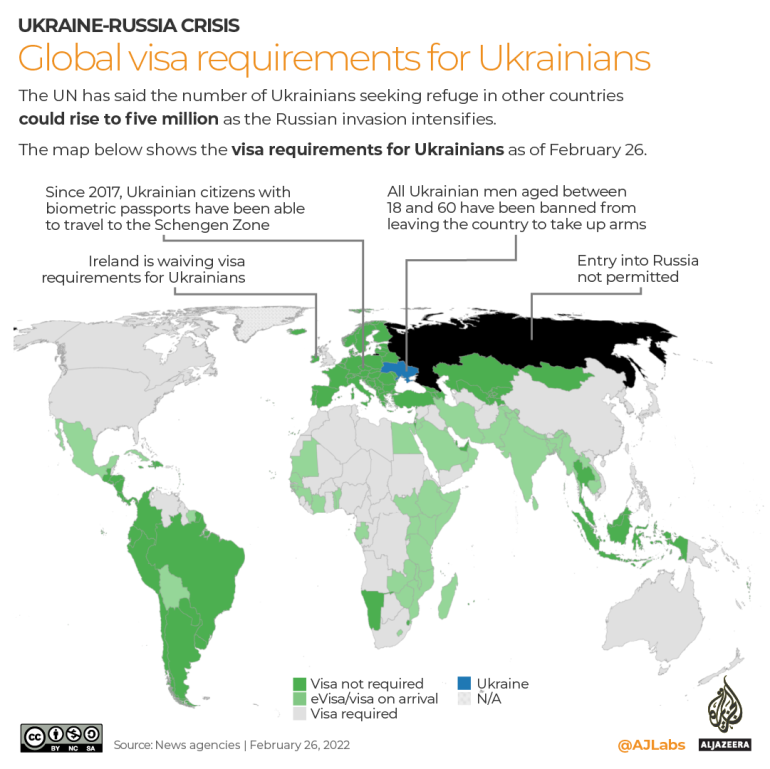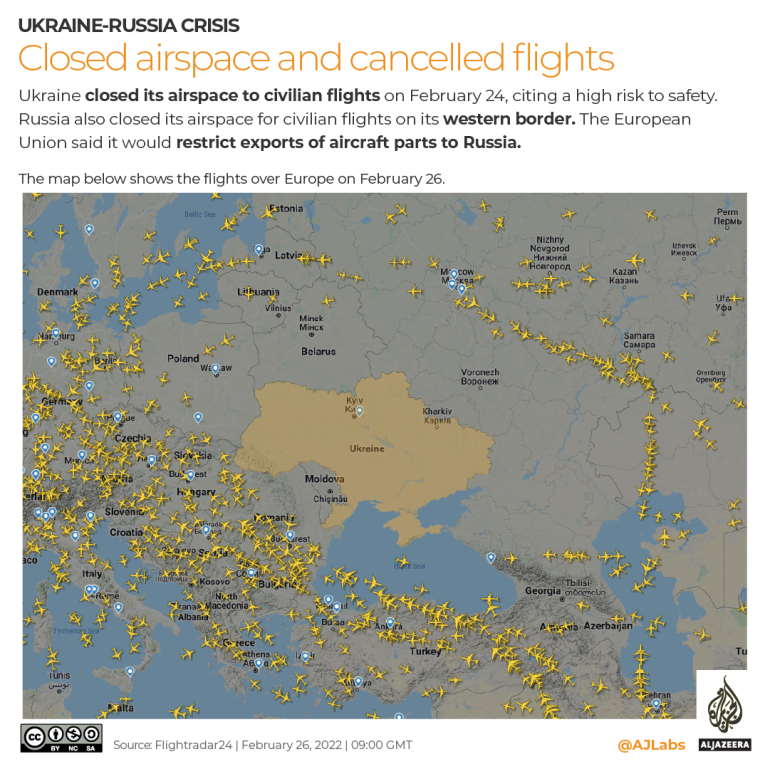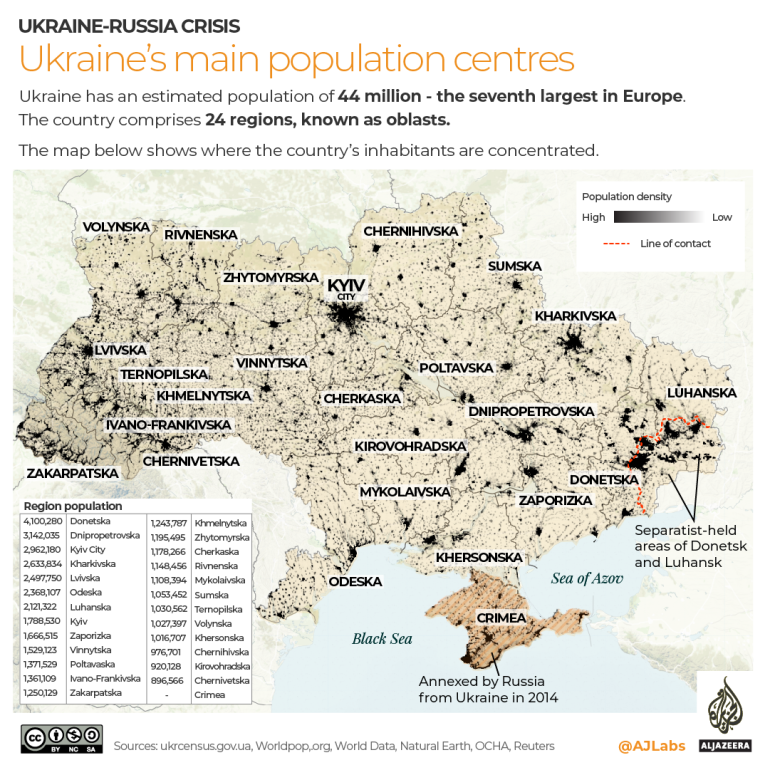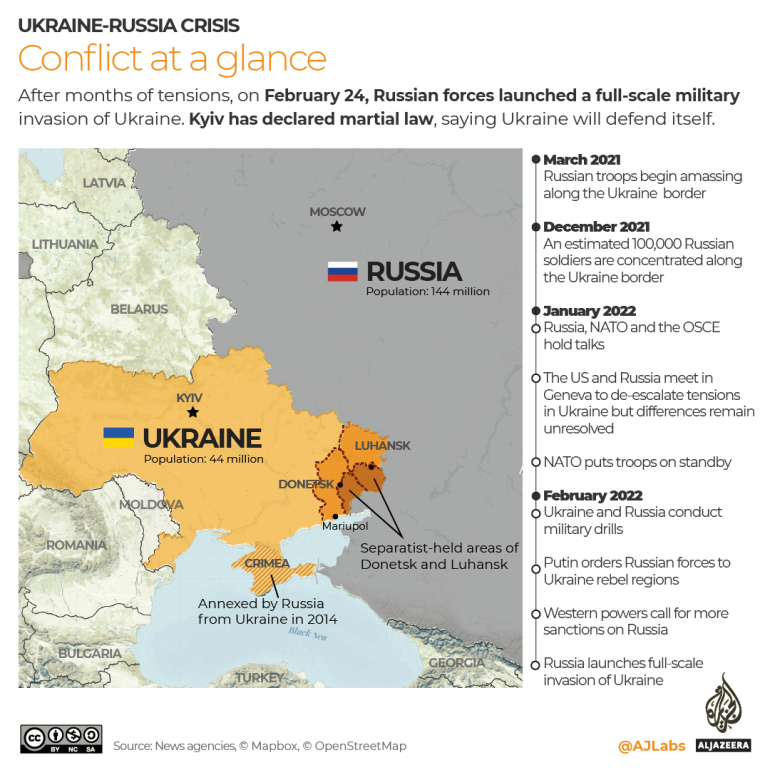More than 150,000 people have fled Ukraine into Poland and other neighbouring countries in the wake of Russia’s invasion, the UN has said.
More than 150,000 people have fled Ukraine into Poland and other neighbouring countries in the wake of Russia’s invasion, the UN refugee agency (UNHCR) has said.
Cars have been backed up for several kilometres at some border crossings as authorities in Poland, Slovakia, Hungary, Romania and Moldova mobilised to receive Ukrainians and provide shelter, food and legal help. Filippo Grandi, the UN’s high commissioner for refugees, said most of those who had left had headed to Poland and Moldova.
Most of the arrivals were women and children. All men aged between 18 and 60 have been banned from leaving the country to take up arms and fight.
Poland, which was already home to an estimated 1.5 million Ukrainians before Russia’s invasion and which has expressed steadfast support for Ukraine, has so far seen the bulk of those fleeing Ukraine cross into its territory.
 (Al Jazeera)
(Al Jazeera)Global visa requirements for Ukrainians
On Friday, Ireland announced it was immediately lifting visa requirements for Ukrainians. The UN said the number of people seeking refuge outside of Ukraine to other countries could rise to five million. Several European countries are preparing for an influx of Ukrainian refugees and have offered humanitarian help. The US said it was providing emergency aid but signalled that Europe should be their primary destination.
Ukrainians can travel to some 140 countries and territories without the need for a visa or with a visa on arrival. The map below shows the visa requirements for Ukrainians as of February 26.
 [Al Jazeera]
[Al Jazeera]Closed airspace and cancelled flights
Ukraine closed its airspace to civilian flights on February 24, citing a high risk to safety. Russia also closed its airspace for civilian flights on its western border with Ukraine and Belarus. Several airlines have cancelled flights to Kyiv. The European Union said it would restrict exports of aircraft parts to Russia.
In recent weeks, dozens of countries have urged their citizens to leave Ukraine. Many airlines have generally avoided flying over eastern Ukraine since 2014, after Malaysia Airlines flight MH17, flying from Amsterdam to Kuala Lumpur, was shot down over separatist-held territory. All 298 people on board, 198 of whom were Dutch citizens, were killed.
The map below shows the flights over Europe on February 26.
 [Al Jazeera]
[Al Jazeera]Ukraine’s main population centres
Ukraine has an estimated population of 44 million – the seventh-largest in Europe. The country comprises 24 regions, known as oblasts. The country’s population has declined since the 1990s with fertility rates among the lowest in the world. As of 2020, Ukraine’s fertility rate was just 1.2. For context, in order for a population to remain stable, an overall total fertility rate of 2.1 is required.
Ukraine is the second-largest country in Europe, after Russia. At 603,550sq km (233,031sq miles), Ukraine is a bit smaller than the US state of Texas, about three times smaller than India, half the size of South Africa and about two and a half times the size of the UK.
The map below shows where the country’s inhabitants are concentrated.
 [Al Jazeera]
[Al Jazeera]Conflict at a glance
After months of tensions and intense diplomacy, Russian forces launched a “special military operation” in Ukraine on February 24. Explosions were heard across the country. Kyiv declared martial law, saying Ukraine will defend itself.
On Saturday, fighting reached the streets of Ukraine’s capital as Russia presses ahead with its invasion. Below is a summary of the conflict at a glance.
 [Al Jazeera]
[Al Jazeera]




















Discussion about this post